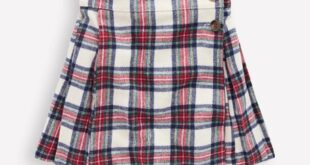Dame Mary Quant, a fashion designer who defined the mod style of the Swinging Sixties, has died aged 93.
The Welsh designer – who was known for bringing mini skirts into the mainstream – died peacefully at her home in Surrey on Thursday morning, her family said.
She was “an absolute trailblazer”, fashion psychologist Shakaila Forbes-Bell, author of Big Dress Energy, told the PA news agency.
“She was really about going outside of the social norms and using clothes as a form of self-expression, but in a very fun and free way.”
Forbes-Bell said: “She really revolutionised the way we see clothes now as a form of non-verbal communication – allowing your clothes to speak before you even open your mouth and you enter a room.
“All of her designs – they say something, they’re very impactful and powerful.”
– A mini revolution
While she did not invent the mini skirt, Dame Mary played a huge role in bringing it to the mainstream.
Born in London to Welsh parents in 1930, Dame Mary grew up in an age of austerity – but her designs were an antidote to this, championing fun, frivolity and women’s liberation. She set up her first store, Bazaar, on the King’s Road in London’s Chelsea in 1955, and her fashion and lifestyle empire only grew from there.
At the time, many of the fashion houses were helmed by men – and Dame Mary brought a fresh perspective, as a woman designing for other young women.
“If you look back, styles were more rigid – it was a way to be very uniform and fit into certain boxes and adhere to social norms,” Forbes-Bell said.
“She really used her designs to shatter those social norms – to show you don’t have to dress in a certain way to be seen as someone to take note of, you can experiment and have fun, but still be very chic and elegant.”
One of her biggest contributions was raising skirt hemlines, giving her designs a youthful feel.
– She captured an era
Dame Mary’s legacy expands far beyond popularising mini skirts.
She became the voice of the younger generation, who wanted to break out of the age of austerity and into the Swinging Sixties.
Dame Mary knew her audience – one of her ad campaigns was entitled Youthquake, showing just who she wanted to dress. She ended up trademarking the daisy symbol, which signified youthfulness and fun.
She also worked to make fashion more inclusive and accessible to a wider range of people.
As well as her eponymous high-fashion label, in 1963 she launched a cheaper diffusion line, called Ginger Group. With this, she pioneered new methods of production to make her designs cheaper and more widely available for the average woman.
On top of this, she sold sewing patterns (known as Butterick patterns) so home dressmakers could recreate her clothes with their own materials for a fraction of the price.
Forbes-Bell said this way of designing became a blueprint for the fashion industry today.
“We’re really seeing the movement of people not wanting to be dictated to, and we’re seeing that kind of ‘trickle-up’ fashion and we can say it started with designers like Mary Quant… By being accessible and being influenced by the everyday people,” she said.
– Bringing feminism into fashion
In the late Sixties and early Seventies, the women’s liberation movement exploded into the mainstream, and with it came various social shifts.
Things were increasingly opening up to women in the UK – the Pill became available and society’s expectations of how women should dress were also changing.
Dame Mary’s designs were a way for women to express their independence – she famously liked shorter hemlines because they made it easier to run to the bus. Hers were not clothes made to restrict the wearer, but to give them more freedom – Dame Mary favoured a stretchy, wearable jersey material for many of her designs.
She was also ahead of the curve in terms of androgynous dressing and constantly played with masculine tailoring. By designing mini skirts as well as more tailored suits, Dame Mary showed that women did not have to express themselves in a singular way.
– A template for the modern lifestyle brand
Today, fashion brands rarely do just one thing – and Dame Mary was an early adopter, expanding hers to include everything from cosmetics and tights to underwear and home furnishings.
Dame Mary’s style was instantly recognisable and easily translated to other products, making her the true template for the modern lifestyle brand.
Source link



